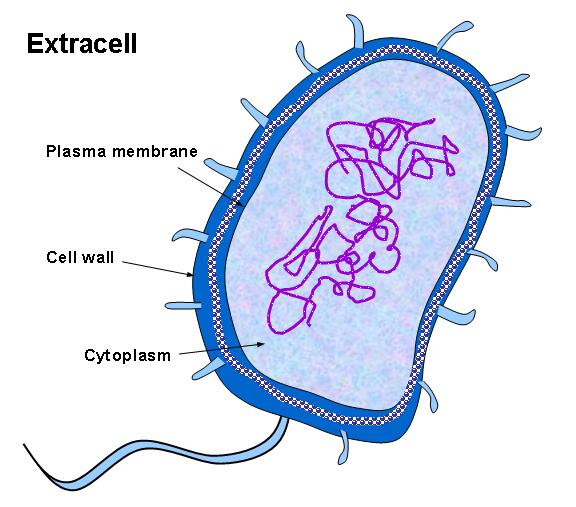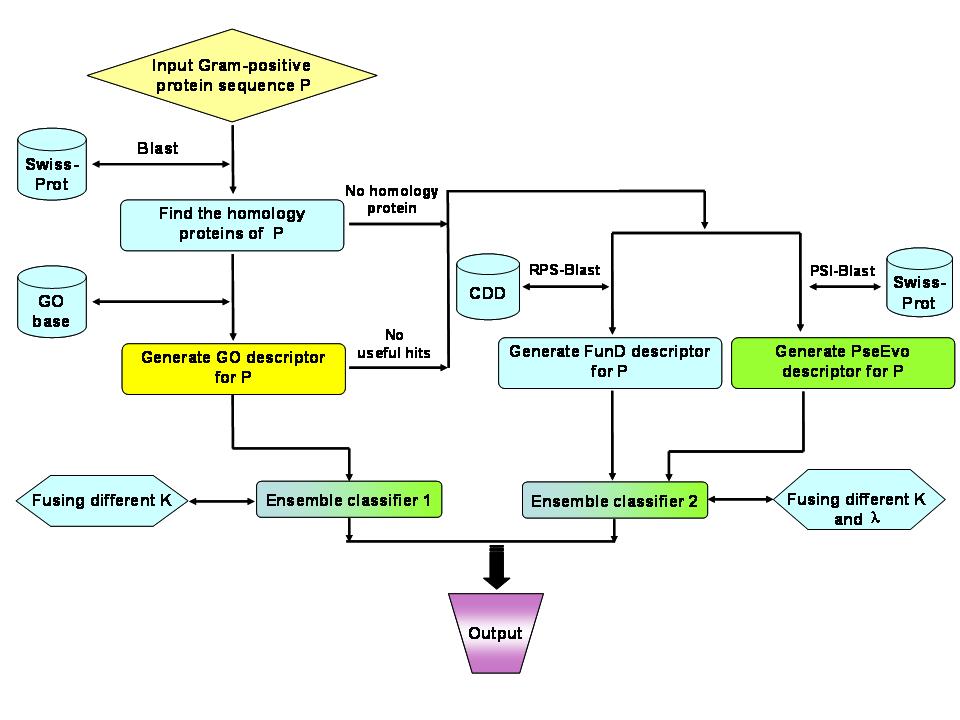|
Gpos-mPLoc was developed for identifying the subcellular localization of Gram positive bacterial proteins by fusing the information of gene ontology, as well as the functional domain information and sequential evolution information. Compared with the old Gpos-PLoc, the new predictor is much more powerful and flexible. Particularly, it also has the capacity to deal with multiple-location proteins as indicated by the character "m" in front of "PLoc" of its name. The current version of Gpos-mPLoc can be used to identify the subcellular location of a query protein among the following subcellular location sites: (1) cell membrane; (2) cell wall; (3) cytoplasm; and (4) extracell (Figure 1). For the procedures of how Gpos-mPLoc works, see Figure 2.
|
| |
 |
| |
Figure 1. Schematic illustration to show the four subcellular locations of Gram-positive bacterial proteins: (1) cell membrane; (2) cell wall; (3) cytoplasm; and (4) extracell. |
| |
 |
| |
Figure 2. Flowchart to show how Gpos-mPLoc works. |

